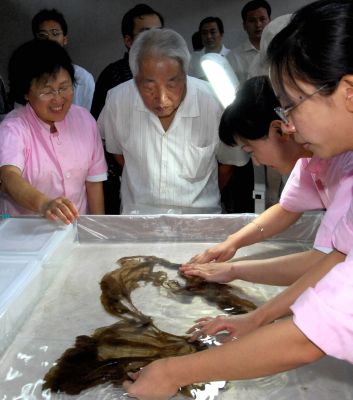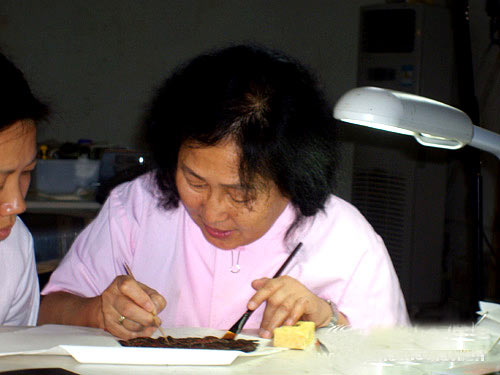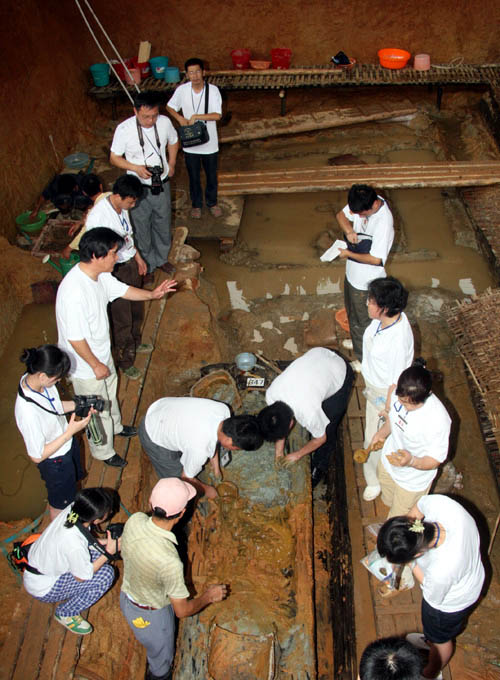| Tools: Save | Print | E-mail | Most Read |
| 2,500-year-old Textiles Discovered by Chinese Archaeologists |
| Adjust font size: |
The textiles, which are well-preserved and feature stunning dyeing and weaving technologies, will revise the history of China's textile industry, says Wang Yarong, an archaeologist who has been following the findings in the textile sector for more than three decades. "Chinese anthropologists suspect that the textile industry blossomed during distant periods of history. This is the first piece of concrete evidence to support their hypothesis," she stated. Wang and her colleagues found more than 20 pieces of fine silk, flax and cotton cloth in 22 of a total of 47 coffins unearthed from a tomb located in Lijia village in Jing'an county. "Most of them are fine fabrics and the largest piece is 130 cm long, 52 cm wide and woven with complicated techniques," added Wang, whose specialty is researching materials at the Textiles Preservation Center, located inside the Beijing Capital Museum. A Peking University professor using infrared devices discovered that a piece of cotton cloth was partly red and partly black. "It was dyed red with vermilion," noted Professor Zhang Xiaomei. Historical records show that the Arabs produced vermilion as early as the eighth century. Europeans learned dye production methods from them later in the 17th century. Yet the tomb where these fabrics were found is believed to date back to the Eastern Zhou Dynasty (770-221 B.C.). The tomb, 16 meters long, 11.5 meters wide and three meters deep, was found last December. Last week the excavation was completed. It contained the largest group of coffins ever discovered in a single tomb. Cultural experts and the Chinese media have dubbed this excavation "the most important archeological project of the year". By Monday, experts had unearthed more than 200 heritage pieces from the tomb. Finds include copperware, jade, gold and handicrafts made from bamboo: a well-preserved fan 37 cm long and 25 cm wide and a bamboo mat 180 cm long and 80 cm wide.
Wei and other members of the research team assumed that the four young women were virgins who had been buried alive alongside a dead aristocrat. This form of ritual sacrifice was a centuries-old custom in ancient China. Five other coffins contained human tissue. Scientists have identified the substance as human brains that have shrunk to the size of a fist but retained their original structure. "We're yet to conduct a DNA analysis to see whether these people were genetically linked to one another," said Huang Jinglue, the head of the archaeological team. Experts say the discovery is unique because the skeletons were so well preserved. The site rests on acidic soil, which is generally unsuitable for the preservation of human bodies.
(Xinhua News Agency July 31, 2007) |
| Tools: Save | Print | E-mail | Most Read |
 |
| Related Stories |




